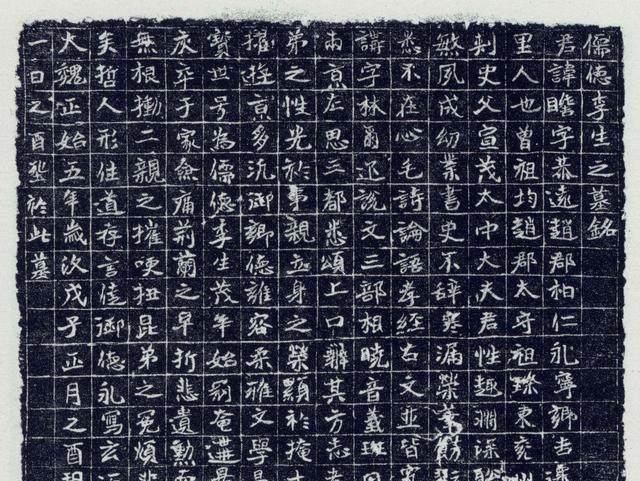Wei Bei is a representative of the Northern Stele and Epigraphy. Kang Youwei's "Guangyi Zhou Shuangyi" Yun: "The North Monument Mo was born in victory over Wei, Mo Bei and Yu Wei" "Fan Wei Monument, although it takes one family, is enough to become a body, and it is beautiful to meet all the families." "The Jin and Song dynasties banned the stele, and the Zhou Qi was short, so those who said the stele must be called Wei Ye."
The prosperity and maturity of the stele was not until Emperor Xiaowen of Wei, especially after he moved the capital to Luoyang in 18 years of Taihe. According to relevant documents, the earliest Wei epitaph in Hebei is the "Tomb of Zhao Mi" excavated in Zhao County in recent years, dating from the second year of Jingming (501 AD) of Emperor Xuanwu of Northern Wei. The Northern Wei "Li Zhan Epitaph" unearthed in recent years in Longyao County, Xingtai, is the second piece, dating from the fifth year of the reign of Emperor Xuanwu of Northern Wei (508 AD). The journal is rectangular in width and width, with a size of about 29×37cm, 16 lines, 15 lines, a total of 225 characters, with a checkerboard grid.

Northern Wei "Li Zhan Epitaph"
Li Zhan was born in a family of eunuchs, his great-grandfather Li Du was the Taishou of Zhao County, his grandfather Li Zhen was the Assassin of Yanzhou in Shandong, and his father was Taizhong Dafu. His great-grandfather and grandfather both served as the county sheriff's chief executive, and his father's official position was smaller, and the official was from the sipins. But the Book of Wei is not contained. Li Zhan loved literature since childhood, was familiar with reading the scriptures and texts, and was quite talented, and was called Rude by the people of the time. Regret the early death of youth. This epitaph was written by his parents, the scribes of the time. Its quotations are exemplary, and the tone of the text is clear. The style of his book is similar to that of "Zhao Mi's Epitaph", but it is more calm and elegant, relying on the beauty of side changes. It uses the pen to start the pen in many directions, tilting horizontally to the upper right, and showing a medium and high arc-shaped posture, skimming and stretching, the horizontal main pen is lengthened, the vertical hook is left flat and long, and the knot is the overall horizontal trend. It is a typical Wei stele. It is 9 years earlier than the Hebei Wei stele "Diao Zun Epitaph" (unearthed in Cangzhou Nanpi) and "Cui Jingyong Epitaph" (unearthed in Hengshui Anping), which is respected by Kang Youwei, and 4 years earlier than the Longyao "Yang Yi Monument" that is also valued by Kang Youwei. This shows its cultural and artistic value.
Part 1
Partial 2
Part 3
Partial 4
Part 5